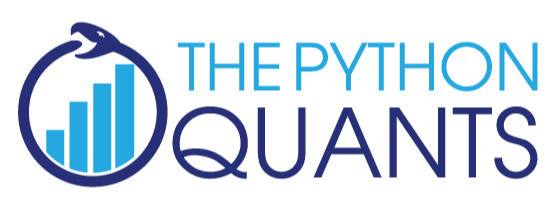
Python for Finance Course¶
Requirements¶
Make sure to have installed locally a comprehensive Python installation like the Anaconda Python distribution (code Python 3.6 tested).
Alternatively, and more easily, register on the Quant Platform where you can execute this Jupyter Notebook file in the browser. After registration, you find all Jupyter Notebook files of this course in the folder pffcourse.
Necessary Imports¶
Working with Python in general requires you to import certain modules/packages from the standard library or from the so-called scientific or PyData stack (i.e. from third parties).
import numpy as np # array operations
import pandas as pd # time series management
from pylab import plt
plt.style.use('ggplot')
# put all plots in the notebook itself
%matplotlib inline
Retrieving Stock Price Data¶
We retrieve end-of-day (EOD) price data for certain instruments (data source: Thomson Reuters Eikon API).
data = pd.read_csv('https://hilpisch.com/tr_eikon_eod_data.csv',
index_col=0, parse_dates=True)
The AAPL object is of type DataFrame.
type(data)
DataFrame objects provide a wealth of (convenience) methods.
data.info() # meta information
Working with the Data¶
Let us inspect the final five rows of the data set.
data.tail() # final five rows
You can easily select single or multiple columns of a DataFrame object.
data['AAPL.O'].head() # first five rows of single column
data[['AAPL.O', 'MSFT.O']].tail() # last five rows of 2 columns
Similarly, you can select single or multiple rows.
data.loc['2017-10-06'] # single row via index value
data.iloc[:2] # two rows via index numbers
Data Visualization¶
There is also a powerful method for plotting.
data['AAPL.O'].plot(figsize=(10, 6));
Let us calculate the Apple stock price log returns.
# fully vectorized operation for log return calculation
rets = np.log(data['AAPL.O'] / data['AAPL.O'].shift(1))
The log returns can then be visualized via a histogram.
rets.hist(figsize=(10, 6), bins=35);
Calculating a Moving Average¶
pandas provides, among others, convenience functions for the calculation of moving averages.
# fully vectorized calculation of 50 days moving average/trend
data['MA50'] = data['AAPL.O'].rolling(50).mean()
data[['AAPL.O', 'MA50']].plot(figsize=(10, 6));
Closing Remarks¶
This closes the first module of the Python for Finance email course. In this module, you have learned:
- how to retrieve stock price data with pandas (datareader)
- how to look up information about and data stored in a
DataFrameobject - how to select columns and rows from a
DataFrameobject - how to visulize data stored in a
DataFrameobject - how to do vectorized calculations with
DataFrameobjects (log returns, moving average)
What you have learned today builds the basis for many important use cases for Python in Finance.
Exercises¶
In order to master the material of this module, do the following:
- replace Apple by another symbol, eg.
MSFT.Oor.SPX - read the 10 Minutes to pandas tutorial under http://pandas.pydata.org/pandas-docs/stable/10min.html
- discover plotting options under http://pandas.pydata.org/pandas-docs/stable/visualization.html
- calculate other statics with e.g.
.rolling(window=X).std()or.rolling(window=X).max() - discover more computational tools of pandas under http://pandas.pydata.org/pandas-docs/stable/computation.html
References¶
You find background information for the topics covered in this module in the following books:
- Hilpisch, Yves (2018): Python for Finance. 2nd ed, O'Reilly, ch. 8.
- McKinney, Wes (2012): Python for Data Analysis. O'Reilly.
- VanderPlas, Jake (2016): Python Data Science Handbook. O'Reilly.

http://tpq.io | @dyjh | team@tpq.io
Quant Platform | http://quant-platform.com
Python for Finance | Python for Finance @ O'Reilly
Derivatives Analytics with Python | Derivatives Analytics @ Wiley Finance
Listed Volatility and Variance Derivatives | Listed VV Derivatives @ Wiley Finance